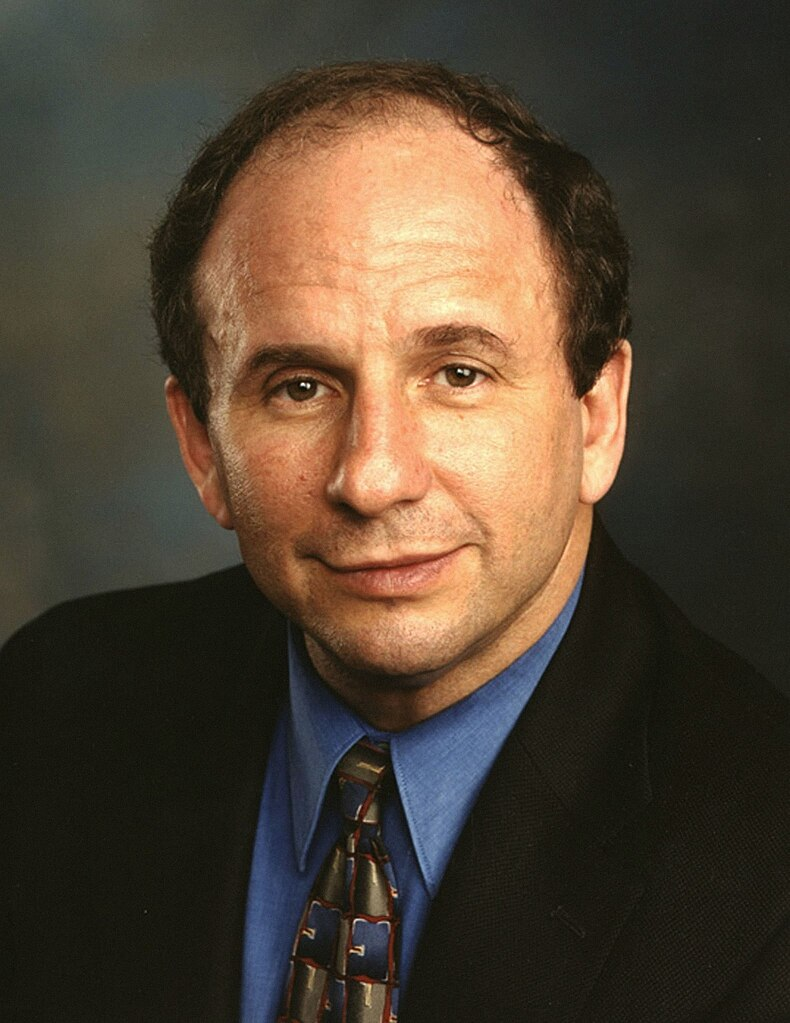More languages
More actions
Paul Wellstone | |
|---|---|
 | |
| Born | July 21, 1944 Washington, D.C., United States |
| Died | October 25, 2002 Eveleth, Minnesota, United States |
| Cause of death | Plane crash |
| Nationality | Statesian |
| Political party | Democratic–Farmer–Labor |
Paul David Wellstone (July 21, 1944 – October 25, 2002) was a left-leaning Statesian politician and senator. In October 2002, he condemned U.S. preparations for the Iraq War. Two weeks later, and 10 days before his potential reelection, he died in a plane crash. After his death, former Vice President Walter Mondale came out of retirement to run against Republican Norm Coleman but lost, giving the Republican Party a majority in the Senate.[1]
Early life
Wellstone's parents were Ukrainian immigrants and grew up in Arlington, Virginia. He was a championship wrestler in high school and college. He earned his PhD from the University of North Carolina in Chapel Hill with his thesis "Black Militants in the Ghetto: Why They Believe in Violence."[1]
Academic career
From 1969 to 1990, Wellstone taught at Carleton College in Northfield, Minnesota. He was arrested in 1970 at a protest against the Vietnam War in Minneapolis. In 1974, the administration tried to dismiss him, but students and staff rallied in support of him, and he was granted tenure.[1]
Political career
Wellstone became a member of the Democratic Party National Committee in 1984. In 1988, he became state campaign co-chairman for Jesse Jackson's presidential campaign and national chairman of Michael Dukakis's campaign. He ran for Senate in 1990 and defeated Republican incumbent Rudy Boschwitz.[1]
Political positions
Wellstone criticized the CIA's crimes and was skeptical of official intelligence reports about 9/11 and the upcoming Iraq War. He criticized Plan Colombia, a $1.3 billion War on Drugs program. He was also pro-union.[1]
First assassination attempt
While visiting Colombia in 2000, a bomb was found on Wellstone's path from the airport in Bogotá. The next day, Wellstone and his staff were sprayed by disease-causing glyphosate.[1]
Death
On October 25, 2002, Wellstone was flying with his family to the funeral of his supporter Tom Rukavina's father. The pilot, Richard Conry, had the highest possible rating for flight experience (5,200 hours) and had passed an FAA check only two days before. A co-pilot who had accompanied him on 50 other flights said he was the most careful pilot he had ever flown with. The crash was blamed on freezing rain even though the air temperature was above freezing and the plane had an advanced de-icing system that activated automatically. The pilot's last transmission was at 10:18 a.m. and reported no problems. After that, communication between the control tower and pilot was cut off. At 10:19, the aircraft began drifting south before suddenly turning west and diving downwards at 10:21.[1]
Investigation
The crash site was announced at about 11:00 a.m. Even though travel time between the Twin Cities and Eveleth was at least 2.5 hours and the crash site was only accessible by all-terrain vehicles, an FBI team from the Twin Cities area arrived at the scene of the crash by noon. The FAA officially confirmed the crash at 12:15 p.m. Carol Carmody, head of the National Transportation Security Board which investigated the crash, was a former CIA agent and was also involved in investigating a plane crash that killed Missouri Governor Mel Carnahan during his campaign against John Ashcroft, Bush's future Attorney General. The FBI prevented first responders from taking photos of the crash site. The NTSB held a year-long investigation led by Bush officials Ellen Connors and Mark Rosenker. Neither were aviation experts.[1]
No in-flight recorder (black box) was found at the crash site, and records of planes landing in Duluth on the morning of the crash were destroyed. The wing flaps, which should have been fully extended for landing, were only extended by the 15° used for initial descent. Two witnesses said the plane's engine cut out or cut on and off, and another heard a gunshot before the crash. The plane's fuselage was badly burned and had the blue smoke characteristic of an electrical fire instead of black smoke that would be caused by a fuel fire. The wings, which contained the fuel tanks, were not as badly burned.[1]
